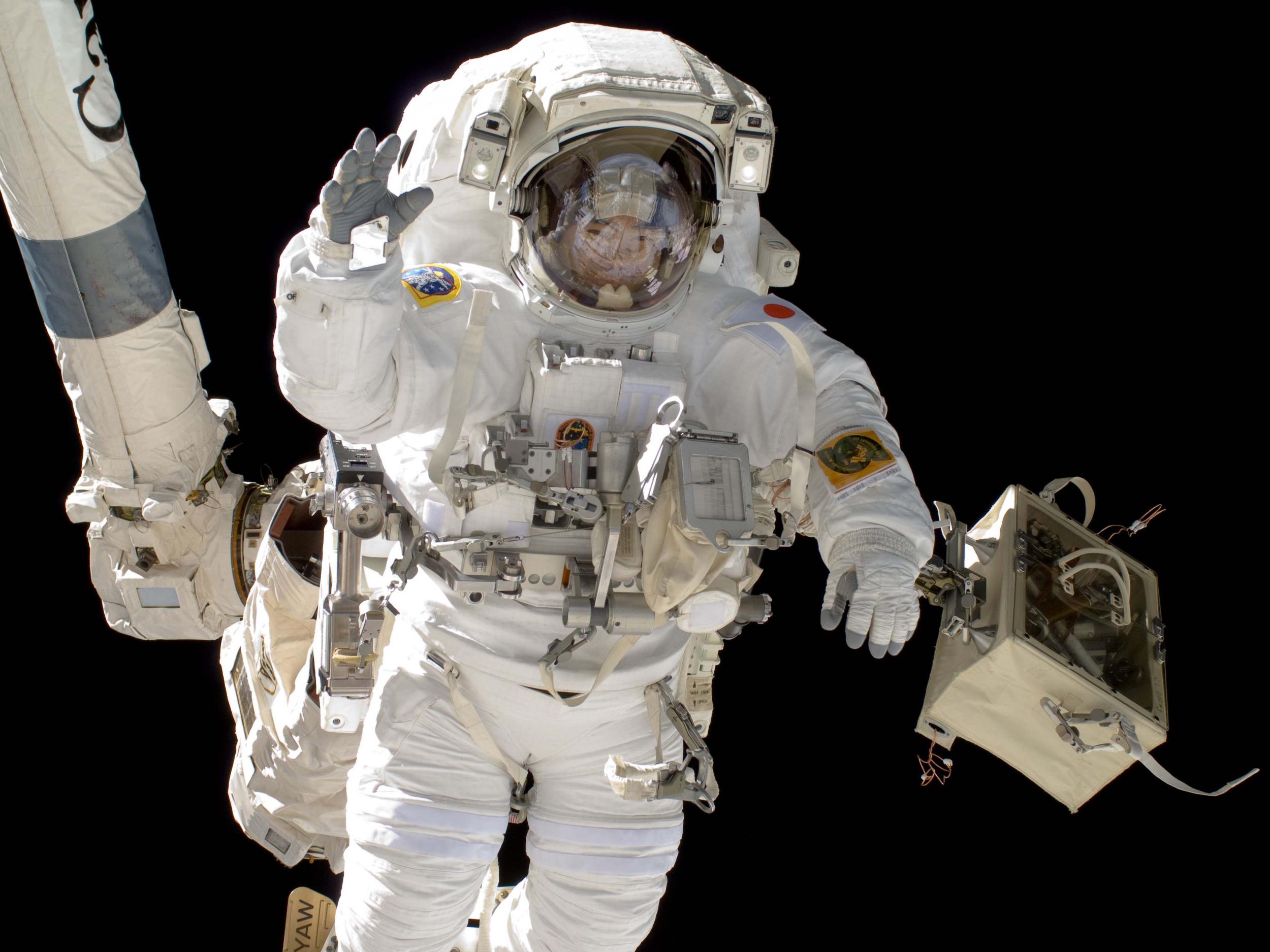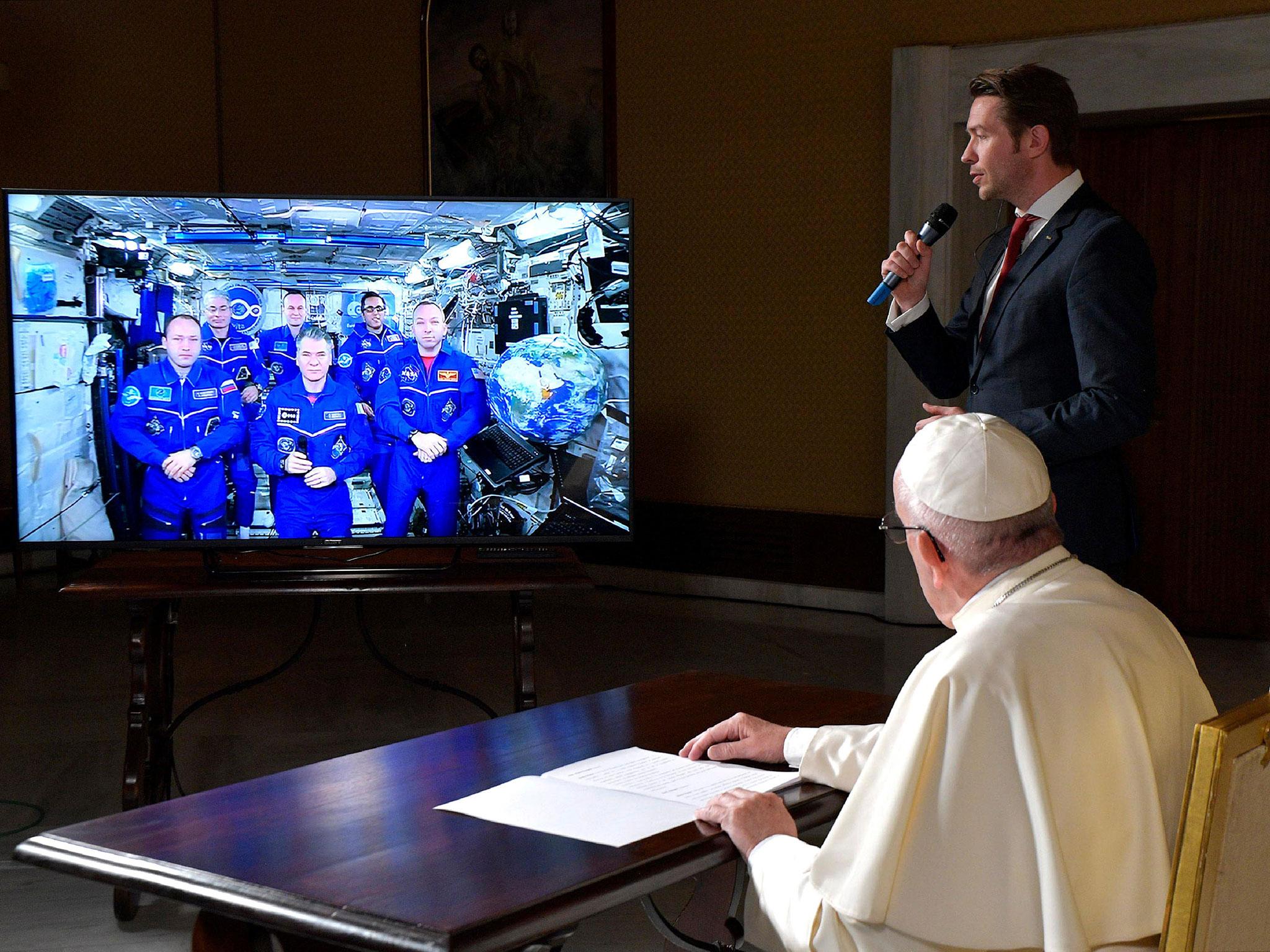International Space Station: Twenty facts about the ISS as it celebrates its 20th birthday
Largest manned object in space built with participation of 16 nations at cost of £93.4bn
Your support helps us to tell the story
From reproductive rights to climate change to Big Tech, The Independent is on the ground when the story is developing. Whether it's investigating the financials of Elon Musk's pro-Trump PAC or producing our latest documentary, 'The A Word', which shines a light on the American women fighting for reproductive rights, we know how important it is to parse out the facts from the messaging.
At such a critical moment in US history, we need reporters on the ground. Your donation allows us to keep sending journalists to speak to both sides of the story.
The Independent is trusted by Americans across the entire political spectrum. And unlike many other quality news outlets, we choose not to lock Americans out of our reporting and analysis with paywalls. We believe quality journalism should be available to everyone, paid for by those who can afford it.
Your support makes all the difference.The International Space Station (ISS) is celebrating its 20th birthday.
Russian space agency Roscosmos kicked off the project to build a successor to the Mir and Skylab stations on 20 November 1998 when it launched its Zarya module from the Baikonur Cosmodrome in Kazakhstan.
Two weeks later, Nasa followed suit with its own component, Unity. The pair were joined in low-earth orbit and started a 13-year construction effort that would see a vast artificial satellite produced, serving as an observatory, laboratory and staging post from which mankind could advance its understanding of our own world and those beyond.
The ISS was also a landmark act of co-operation between the United States and Russia, the old Cold War foes definitively laying to rest decades of nuclear tensions to share the expertise both sides had accumulated during and after the Space Race of the 1960s to further the common good.
To celebrate the 20th anniversary of this extraordinary project, intended to last another 10 years at least, here are 20 facts you might not know about the ISS:
1. Sixteen nations were involved in its construction. In addition to the US and Russia, those were: Belgium, Brazil, Canada, Denmark, France, Germany, Italy, Japan, the Netherlands, Norway, Spain, Sweden, Switzerland and the UK.
2. No fewer than 136 space flights from seven different types of craft were deployed to deliver parts to the engineers. The large modules were delivered on 42 assembly flights: 37 on US shuttles, five on Russian Proton and Soyuz rockets.
3. The result is the largest manned object in space, 357ft long — just a yard short of a full-length American football field.
4. The ISS weighs 419,725kg including the weight of spacecrafts, of which it can accommodate as many as six at any one time.
5. It is the single most expensive object ever built at £93.4bn.
6. It is the third brightest object in the night sky after the moon and Venus.
7. The ISS travels at a speed of 4.791 miles per second, fast enough to go to the moon and back in a single day.

8. At that pace it orbits the earth approximately once every 90 minutes or 16 times in a 24-hour period, meaning it passes through 16 sunsets and sunrises per day. It passes over 90 per cent of the earth’s population in the course of its orbital path.
9. The space station has more living space than a six-bedroom house, offering six sleeping quarters, a gym and a 360-degree bay window, but only two bathrooms. There are no chairs either — astronauts taking time out to eat their three square meals a day of canned and dehydrated food have to float gently in zero gravity. The atmosphere aboard is aboard is described as having a “metallic-ionisation-type smell”.

10. So far 230 people from 18 nations have visited the ISS and it has been continuously occupied since November 2000.
11. Nasa’s Peggy Whitson set the record for the longest time living and working in space at 665 days on 2 September 2017, before returning to earth the next day.
12. Astronauts aboard have completed 205 spacewalks since 1998 to carry out construction jobs, maintenance and repairs.

13. The physical toll all this takes on astronauts is considerable: crew members need to work out in the station's gym for at least two hours a day to mitigate the loss of bone and muscle mass and maintain the normal bodily health they would experience on terra firma.
14. Four different delivery craft supply the crew with food and equipment: Orbital ATK’s Cygnus, SpaceX’s Dragon, JAXA’s HTV and the Russian Progress.
15. A Water Recovery System on board reduces the astronauts' dependence on these cargo craft by 65 per cent through recycling. Even urine is reused.
16. Oxygen is generated by a process of electrolysis: current captured from the station’s acre of solar panels is used to split water molecules into hydrogen and oxygen.
17. The ISS's internal pressurised volume is 32,333 cubic feet, which is roughly equivalent to that of a Boeing 747 passenger jet.
18. Software on board the ISS monitors 350,000 sensors checking in on crew health and safety. The station meanwhile carries 50 computers and eight miles of wire, enough to run around the perimeter of Central Park in New York City.
19. The ISS provided the set for the first music video ever shot outside of our atmosphere when commander Chris Hadfield made a short film set to David Bowie’s “Space Oddity” up there in May 2013.
20. To mark its turning 20, the ISS is getting a Refabricator for a birthday present. The device is a hybrid recycler and 3D printer that melts plastics down so that new tools can be created.

Join our commenting forum
Join thought-provoking conversations, follow other Independent readers and see their replies
Comments